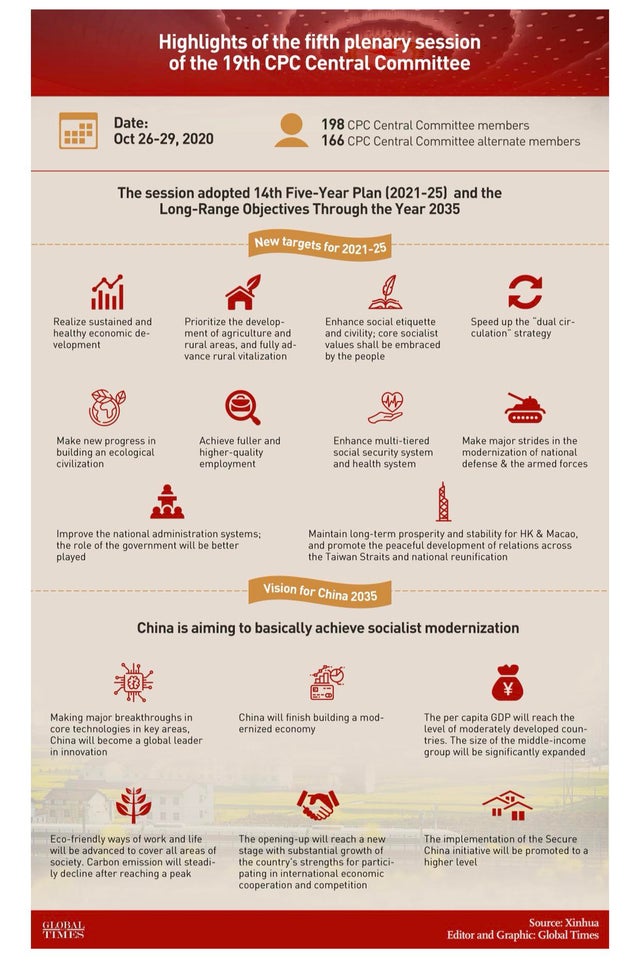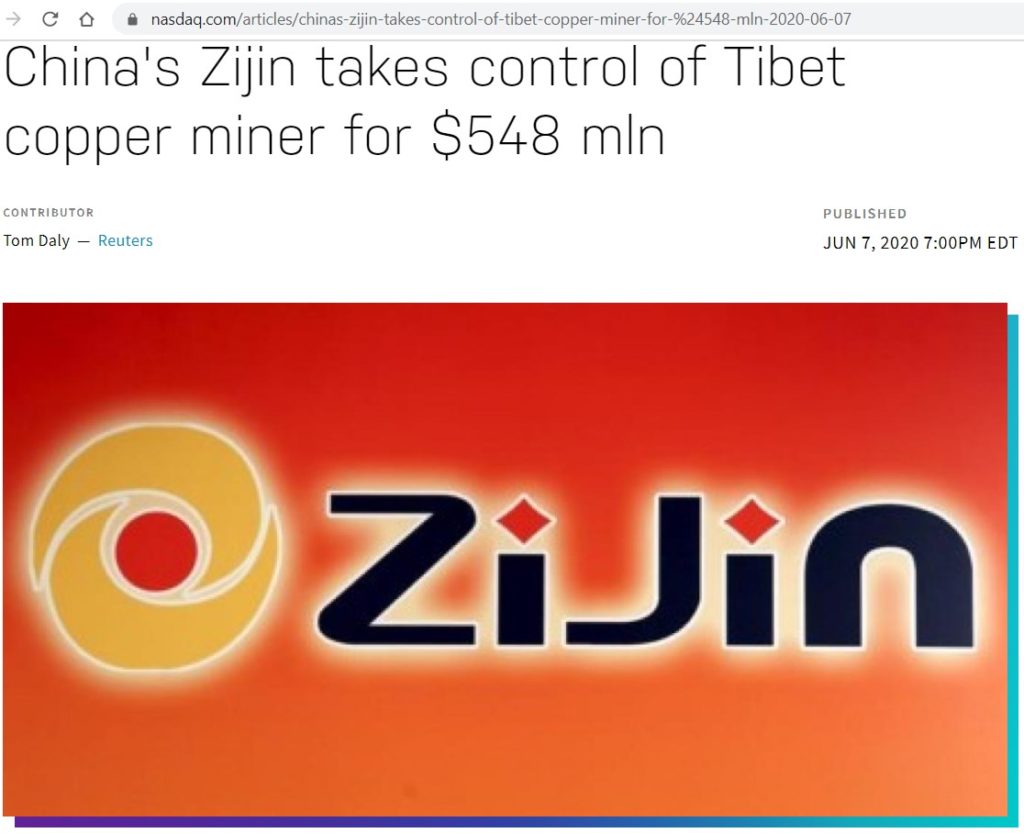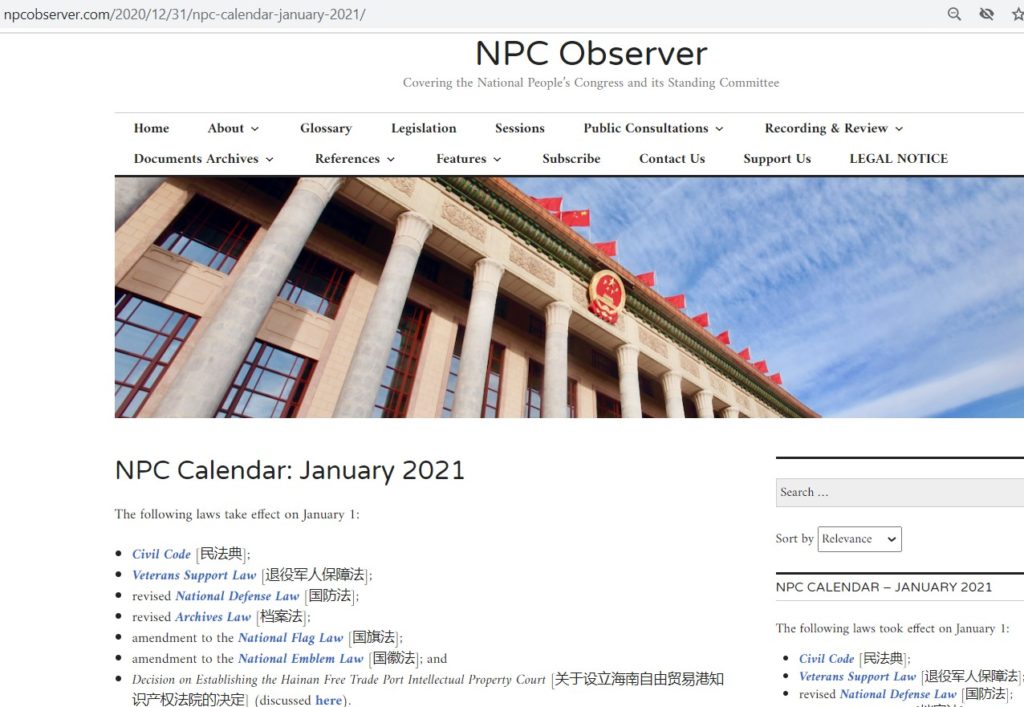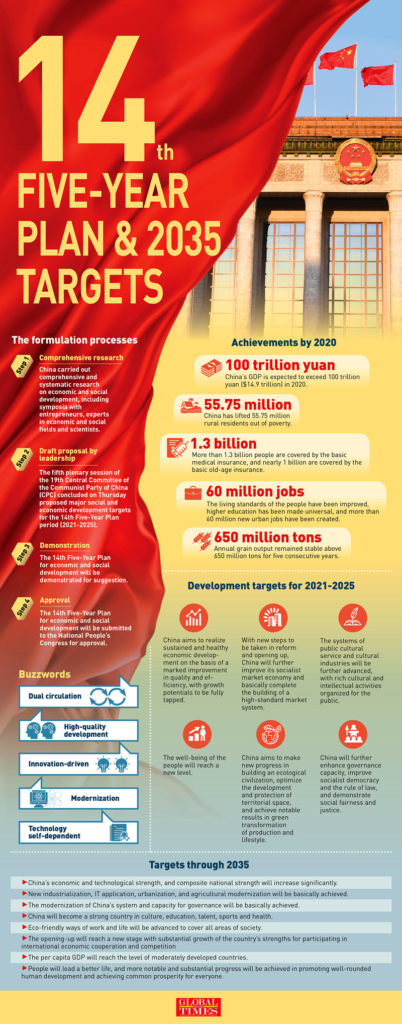Blog six in a series on Tibet in 2021 6/8
14TH FIVE YEAR PLAN plus GOALS FOR 2035
Seeing five years ahead, immediately after a global pandemic, might seem ambitious, but China’s leaders are more ambitious than that, announcing (at the CCP Fifth Plenum in October 2020) goals for 2035. Of necessity these goals are rosy but vague, such as the full achievement of socialism. Among the few specifics are technology goals, some of which do impact Tibet.
China’s long-term goals are tech-oriented. China will make “major breakthroughs in key core technologies,” become a global leader in innovation, and achieve “new industrialization, informatization, urbanization, and agricultural modernization.” The “core technologies” were not named in the communique, but likely include the same technologies emphasized in other government plans: semiconductors, telecommunications, big data, and artificial intelligence. Notably, the above technology goals are for 2035. The list of tech solutions is uncannily like the fantasies of Chinese kids.
It might seem Tibet has a very minor role in realising these ambitions. Yet Tibet is already at the forefront of electrifying the laboratories and factories of eastern China, and is also where blockchain bitcoin mining happens, and polysilicon manufacture for computer chips, and lithium battery production for new energy vehicles. Tibet is changing fast.
China plans to double its current GDP of around 100 trillion yuan in 2035, and double current per capita GDP of $10,000. “That would require a real GDP growth of around 3.5 percent annually; it is a big target but can be done if China’s full potential is realized.”

The 2035 goal is to double average incomes, a slower rate of growth than in earlier decades, but sufficient to make China’s economy (in actual purchasing power) double the size of the US, a prospect that drives American anxieties. In personal terms, that would mean the average Chinese citizen would have an income comparable to Greece or Portugal today.
Achieving these goals requires much greater exploitation of natural resources, in a time when China, under American pressure, feels its supply routes are vulnerable and is urgently boosting the domestic economy. That means not only stimulating greater consumption, but also more self-reliance on domestic production. Since Tibet remains largely an extraction zone and supplier of raw materials (producer goods in economists’ jargon) impacts on Tibet could intensify, especially if one includes the delivery of water from Tibet as the most essential of all, from Beijing’s perspective.
As for the 14th Five-Year Plan we can assume, from the August 2020 Tibetwork Forum’s insistence that the CCP has Tibet on exactly the right track, more of the same. That means more acceleration, more intensification, including more pressure on remaining pastoralists to sell more herd animals for meat. It means more mining and more industries in Tibet processing Tibetan minerals, using hydropower generated in Tibet. Detailed specifics are in the topics of this blog series.

Around the world, plenty of folks, enthusiasts for globalisation, continue to be amazed China still has Five-Year Plans, drawn up by central planners, which sounds so like the command-and-control economy of the Maoist era, when the state could simply allocate resources wherever it chose to. So what is a Five-Year Plan these days? It’s not a Maoist allocate and distribute plan, it’s messier, more contested by vested interests. But it is not just indicative either, just a wishlist. Centralisation under Xi Jinping in many ways is a reversion to Maoism, not only in ideology but also in issuing directives that must be obeyed.
Now that China has declared itself to have achieved modest prosperity, there are many powerful players pulling and pushing those Five-Year Plans in different directions. Even though the FYP will be formally unveiled at the National People’s Congress in Feb or March 2021 for formal approval, that doesn’t mean the whole Plan is made public then, or in some areas even written by then. Chunks of the FYP will come out in subsequent months.

